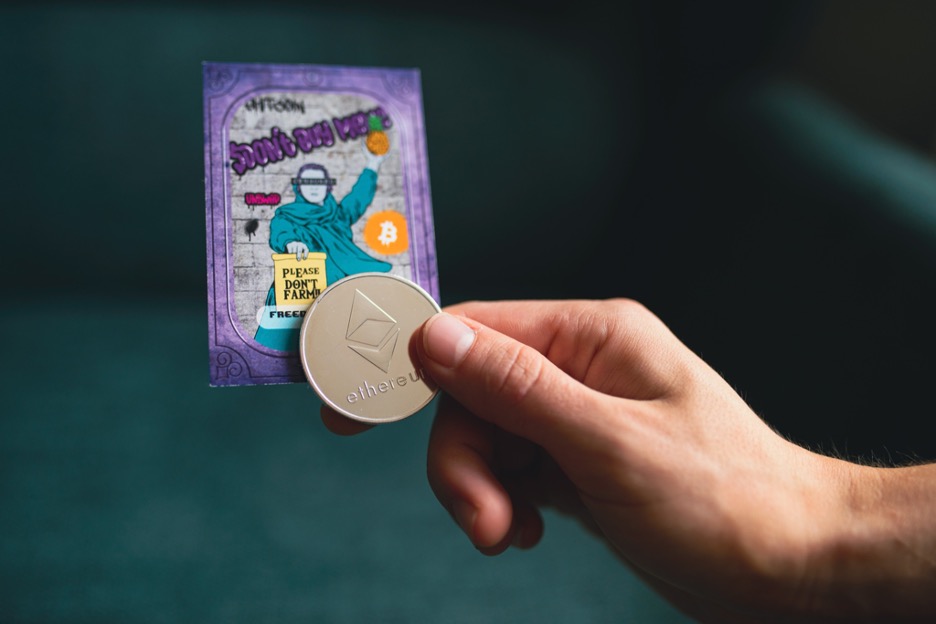Photo by Old Money on Unsplash
More than a decade had passed since American writer Blake Butler tried to sell his novel. Ironically titled Decade.
In February 2021, he sold it as an NFT for 5 ETH (short for cryptocurrency Ethereum). At the time, 5 ETH was worth approximately $7,570 (INR 5.5 lakh). It was more money than what his previous books, published the traditional way, had made together. Value is up since. This one in GIF mode is downloadable to read as a PDF.
In an interview with Literary Hub, Butler says of NFT, “It feels like a moment for reinvention, where the field is as wide open as you could want,” But before getting to what it means for the environment let’s see, what in internet heaven is an NFT? Here is a hypothetical story to explain this.
“Give me those cards,” says the teacher while snatching the action superhero cards from the students in the classroom. She then locks up the cards (not the kids) “It’s not fair,” one student cribs to the other. “I wish nobody stole our own cards from us,” says another, ready to howl.
In 2021, digital versions of these cards or books can be kept as Non-Fungible-Tokens or NFTs. These are unique digital files you cannot touch or put in your bag but just see on a screen. So, no teacher can take away a superhero action card, if it is in the form of an NFT. But how does someone own one?
One student feels that the other student has a card they want. They exchange cards. Many others follow suit. Now, to avoid confusion, everyone writes down who owns which cards in each of their notebooks. They keep updating their notebooks real-time. This notebook is a ledger.
When a student tries to cheat by showing more cards in their notebook than they actually have, it simply does not match with the other notebooks. So no cheating. But what if a student without any cards wants to get their first one?“Those who update the notebooks will get yellow coins,” a smart chap puts an idea forward, “people can use these coins to buy the superhero action cards.”
Those writing on notebooks may find it boring to maintain, but cryptocurrency is the reward for those who maintain a ledger. You get it? This is not just child’s play, but an internet model for buying and selling things, in a virtual marketplace worth millions. A collection of such notebooks, action hero cards and children, online is like a blockchain network in operation.
Every computer is constantly creating copies and maintaining such ledgers in a decentralised way. While regarded as low on error, this system is heavy on energy use. Harvard Business Review says, “Bitcoin (the most common cryptocurrency) currently consumes around 110 Terawatt Hours per year — 0.55% of global electricity production, or roughly equivalent to the annual energy draw of small countries like Malaysia or Sweden.” Yet, people are increasingly using it.
Writers like Indian self-help author Arun Batish, published EKA, as a paperback in 2019. It is available as an NFT too. In 2020, N.E Carlisle published a young adult book, Mermaid Eclipse. In the same year, she announced it as the first NFT Novel in collaboration with cyber artist, Lori Hammond. They have launched this magic tale as an NFT with the book’s manuscript and a signed copy of the original artwork. An Indian and a global example, but you get the drift? NFT is helping writers.
Continuing with the student analogy, what happens next? One student puts forth a demand, “Everyone has to write this condition in their notebooks, I will pay for this action card only if it allows me to win the card competition tomorrow.” The seller can choose to sell the card if the other party agrees to this condition. The buyer too knows the terms. A condition like this is called a smart contract.
RVRS, one instance of a cryptocurrency, is using such a smart contract. When someone is buying or selling using this token, they are asking its users to agree on a condition. Which in their case is, “we will be using a tenth of your transaction amount to remove carbon dioxide from the atmosphere.” RVRS says they support tree planting projects around the globe.“Does anybody need a shovel?”, asks a volunteer, in their PR tree-planting drive video.
As the first year of a new decade wind down, NFT sales and creativity for its collaborators will define the upcoming decade. But so will the uncryptic truth that Terms and Conditions are the only major superhero action card the industry has authored, in exchange for its carbon footprint. So far.
Cefil is a student of Mathematics and Environmental Studies at Ashoka University.
We publish all articles under a Creative Commons Attribution-NoDerivatives license. This means any news organisation, blog, website, newspaper or newsletter can republish our pieces for free, provided they attribute the original source (OpenAxis).

